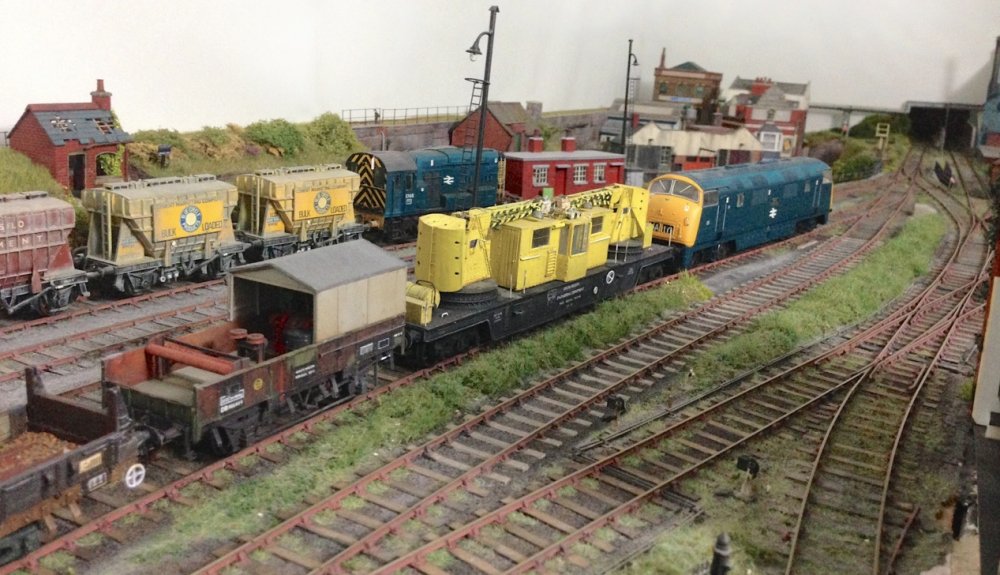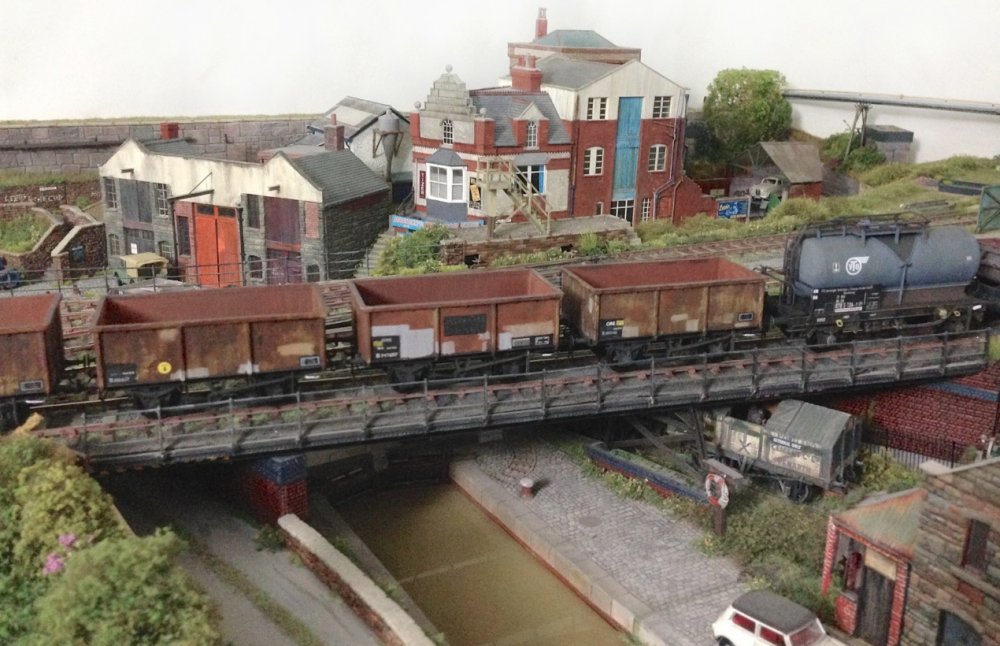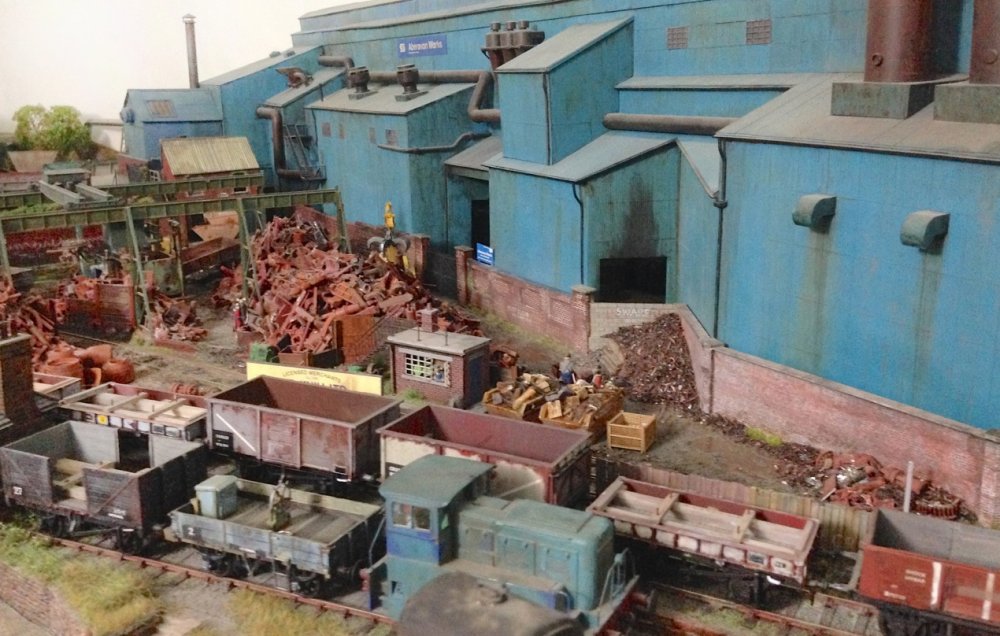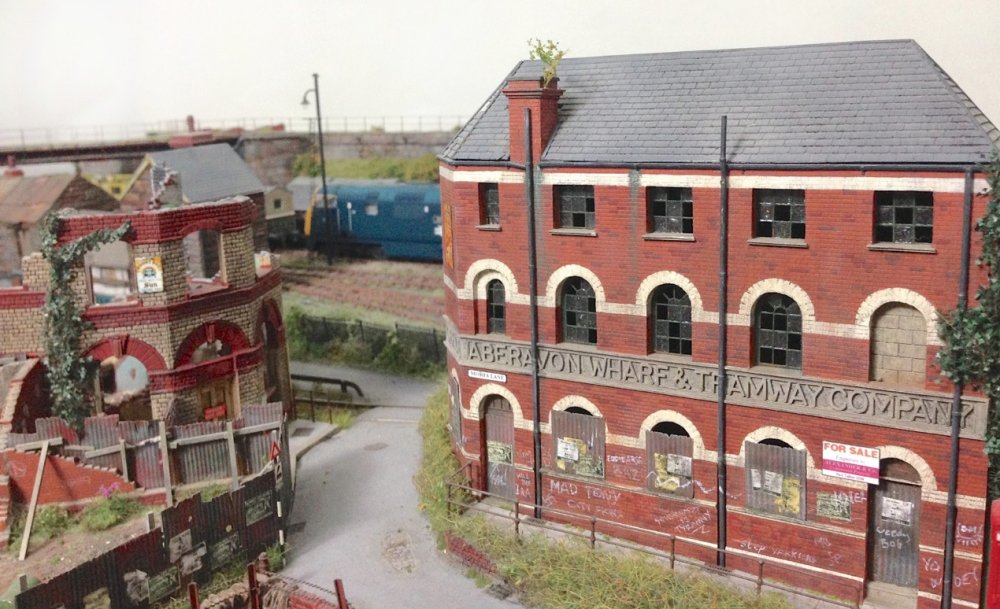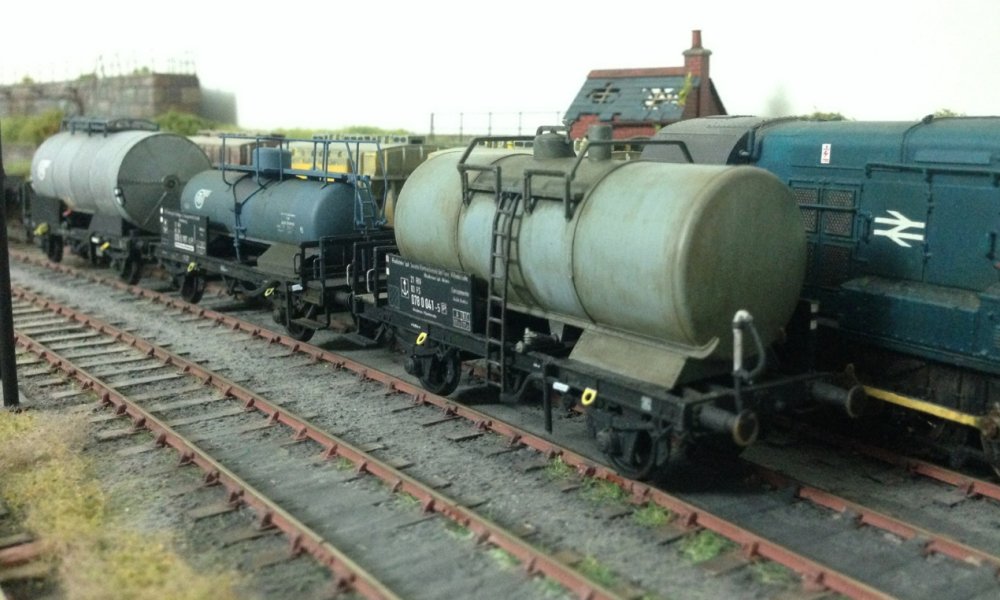With everything quiet on the rail front our intrepid photographer heads back towards the bright
lights of Port Talbot town and captures a distant view of ‘Greyhound’ stabled in the yard
awaiting the start of the engineering possession out on the mainline.
No sign of life on Morfa Lane either!
Our photographer was back at the yard Monday morning and found that the first exchange of
traffic had already taken place. An empty phenol tank; an empty bromine tank (both heading back
to Germany) and a loaded pesticide tank for Italy await the next trip back to Margam yard and,
eventually, Harwich for a trip on the ferry.
*****************************************************************************************************************************************************************

KARL CROWTHER

Wiring again this month, mainly, but hopefully should have that task done by the end of the
year….. I’ve also been working on this Bachmann/Lima hybrid Class 40 for a friend (D326 that
is, D381 of similar origins is a long-standing Kentside regular). The Lima body for D326 came
to me already renumbered and with etched windscreens and radiator grille already fitted.
However, the other ‘embellishments’ I fitted are from Shawplan/Extreme Etchings – namely
roof fan & grille, windscreen wipers and EE Builders’ plates (below the cab side windows).
I also re-worked these windows as I had with D381, deepening them by around 1mm to give a
better proportion – still too wide relative to the height, but hopefully a bit of an
improvement at least. D326 also fitted with Zimo/Digitrains sound decoder package, plus a
large capacity stay-alive. A further help to really reliable running was to fit wiper
pickups to the non-powered ‘inner’ wheelsets.
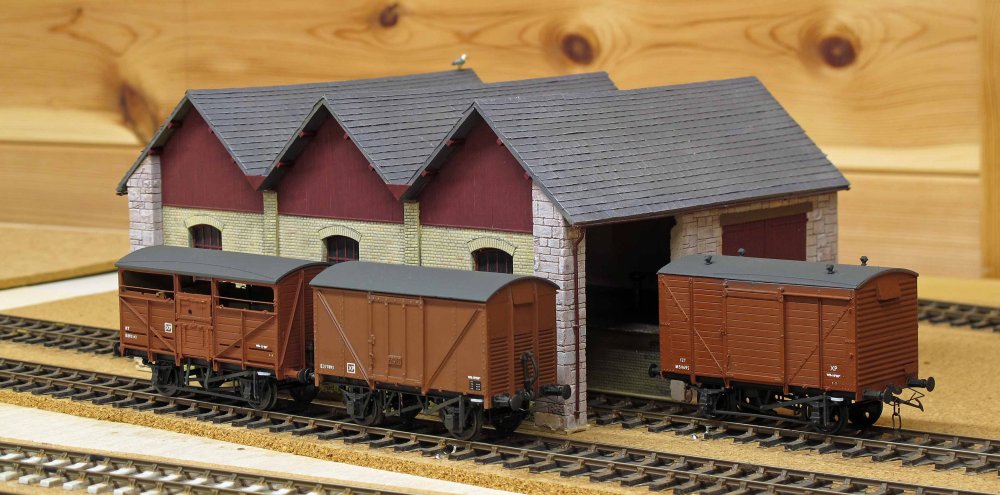
The Ratio ex-LMS 12T van seen last month has now been painted and lettered and ready for
weathering. I’ve since realised I needn’t have scratchbuilt the diagonal strapping, as Rumney
Models do an etch for this purpose! Seen here in the company of an ex-LNER fruit van (Parkside)
and an Airfix BR cattle wagon. This latter should really have three slats at the bottom and not
two as on the moulding – I did try to create the missing opening, and made a bodge of another
kit in the process, so decided to leave well alone on the second attempt.
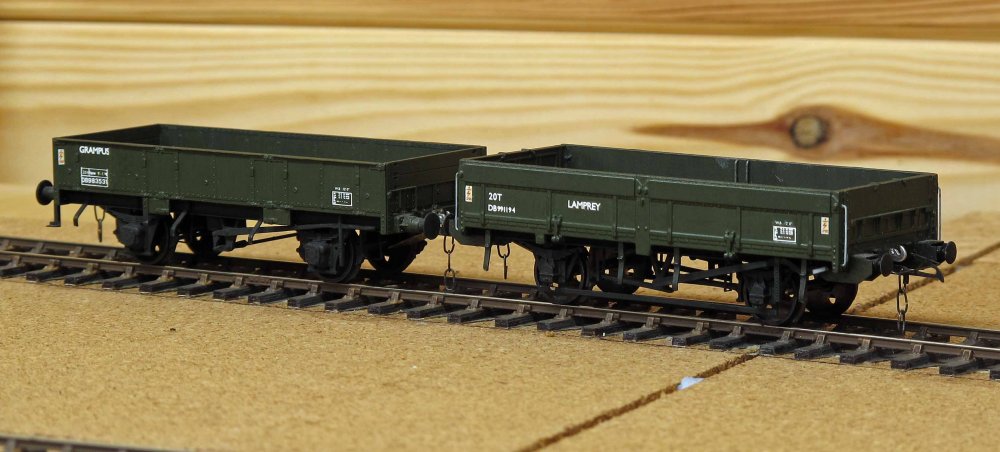
Progress too on several other items of rolling stock built some time ago and which have now also
visited the paintshop. Seen here, a Parkside Grampus and a Chivers Finelines Lamprey, both with
Fox Transfers lettering (and yes I know I still need to add the ‘region’ identifier plate to the
Grampus – and get them weathered….). I’ve standardised on the 3mm scale version of the Spratt &
Winkle coupling for all ‘shuntable’ stock.
*****************************************************************************************************************************************************************

GREG BROOKES
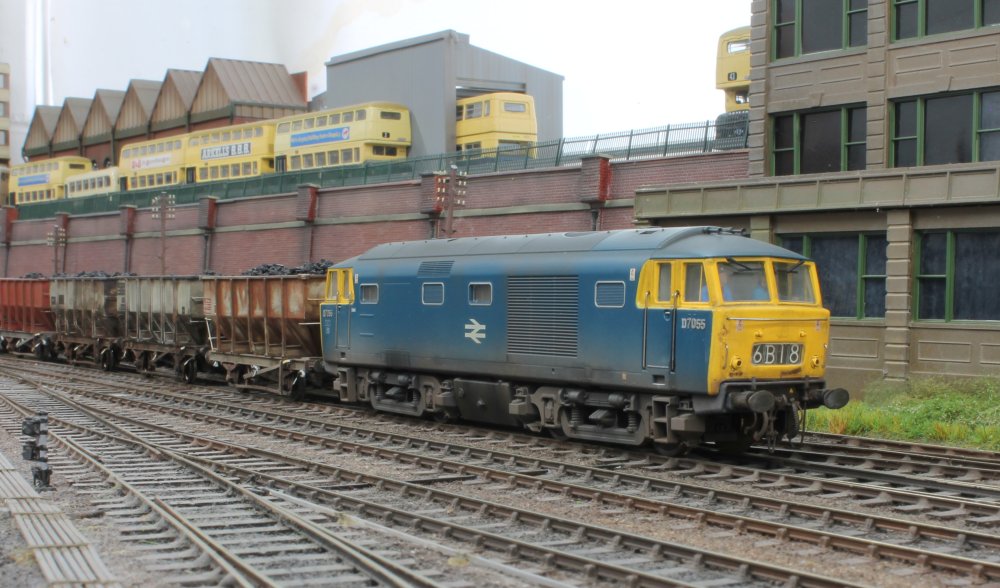
Paul was out with his camera at Shenston Road, so here's few processed a few weeks ago.
Hymek D7055 with a mix of Accurascale and scratchbuilt 24.5 ton hoppers.
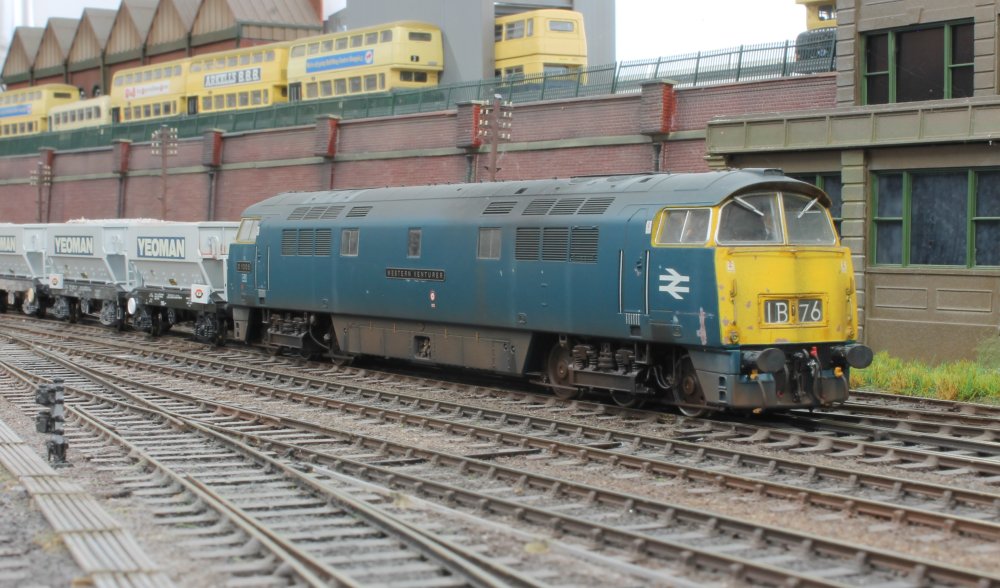
D1005 Western Venturer with modified and weathered hoppers.
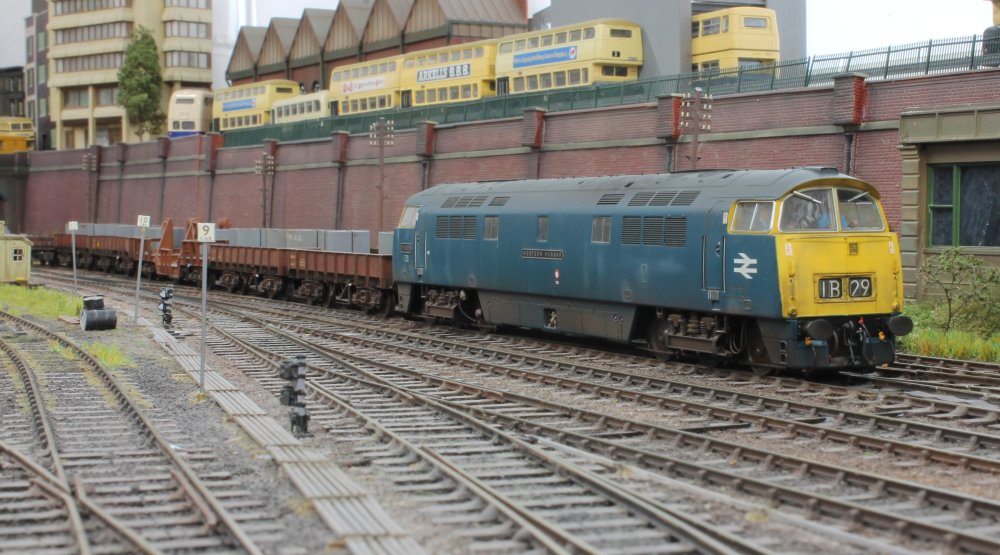
D1017 Western Warrior on a strip coil train.
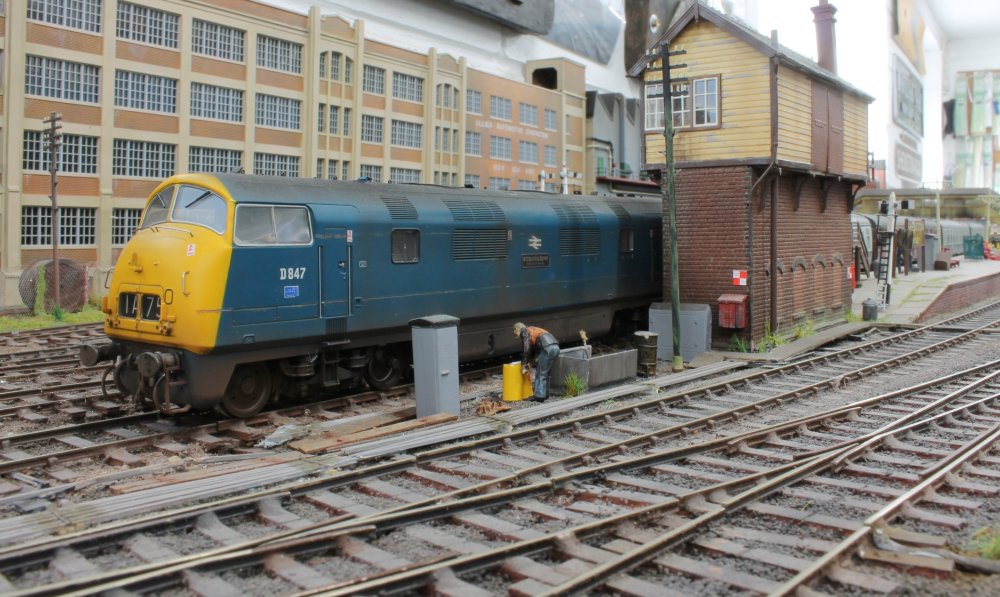
D847 Strongbow heading a northbound express to Wolverhampton.

352 with Accurascale Cemflos.

229 Saxonia with Chivers MDV kit built wagons.

D236 hauling a mix of 13 ton opens.
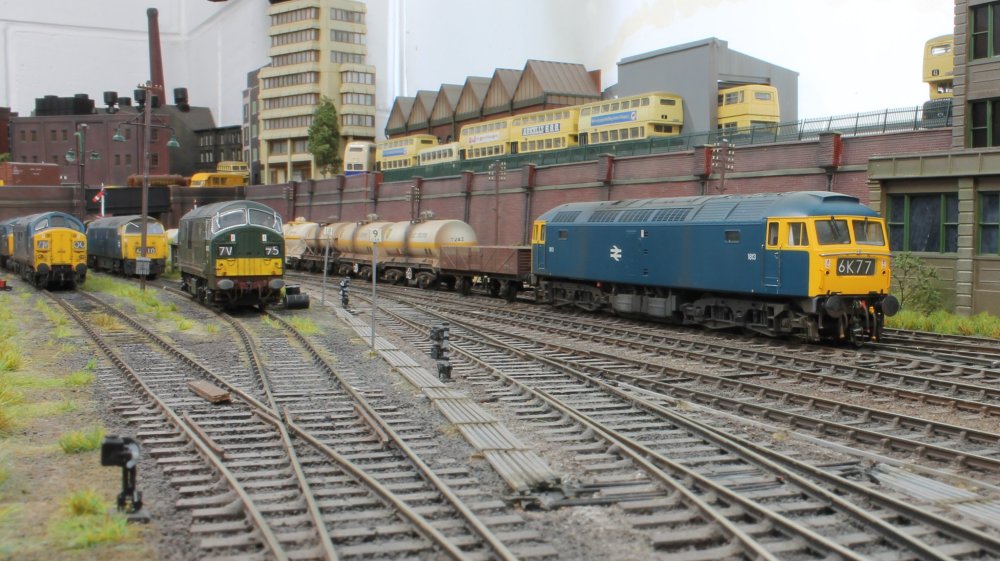
1803 with the scratchbuilt liquid chlorine tanks.
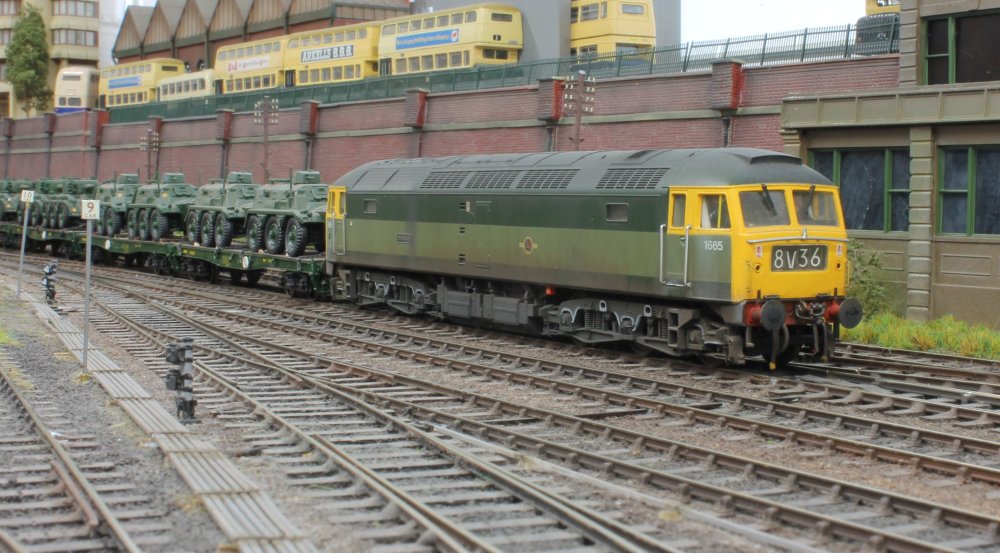
1665 hauling a rake of Warflat wagons....
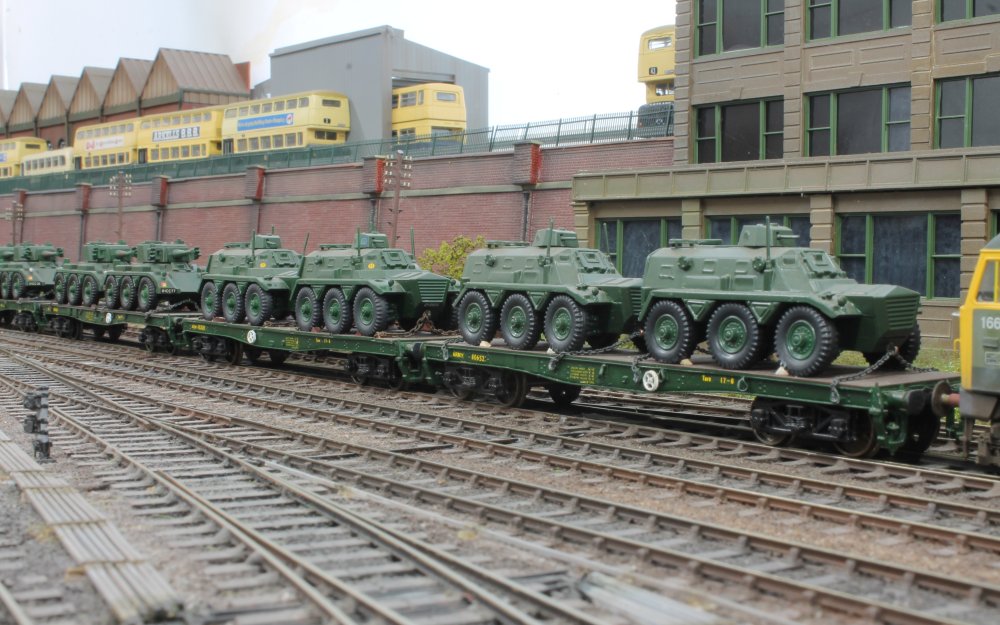
....loaded with Saracen and Saladin2 armoured vehicles.

Here's a few snaps from the pocket camera - 37141, 37158 & one other on a
heavy iron ore train.
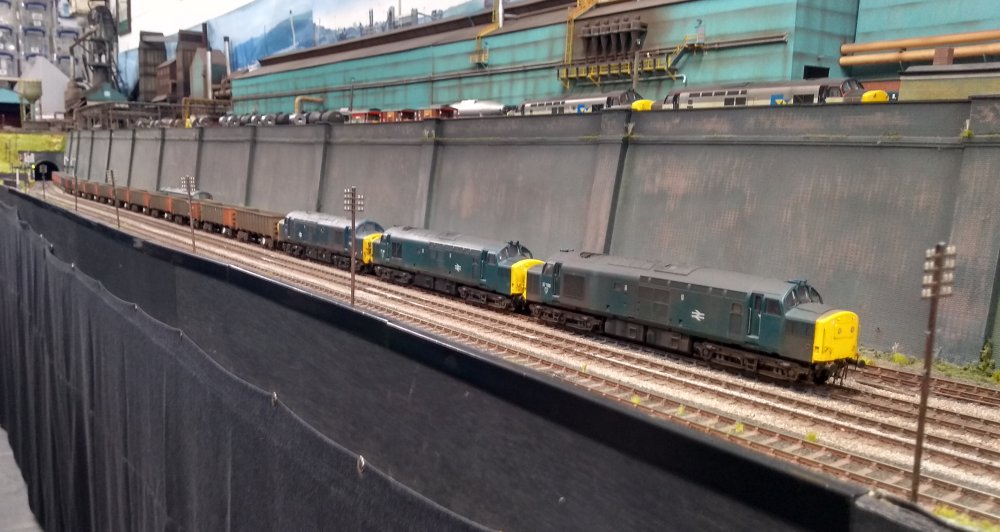
Scratch built PTA tipplers with a few of the Accurscale versions on the rear....
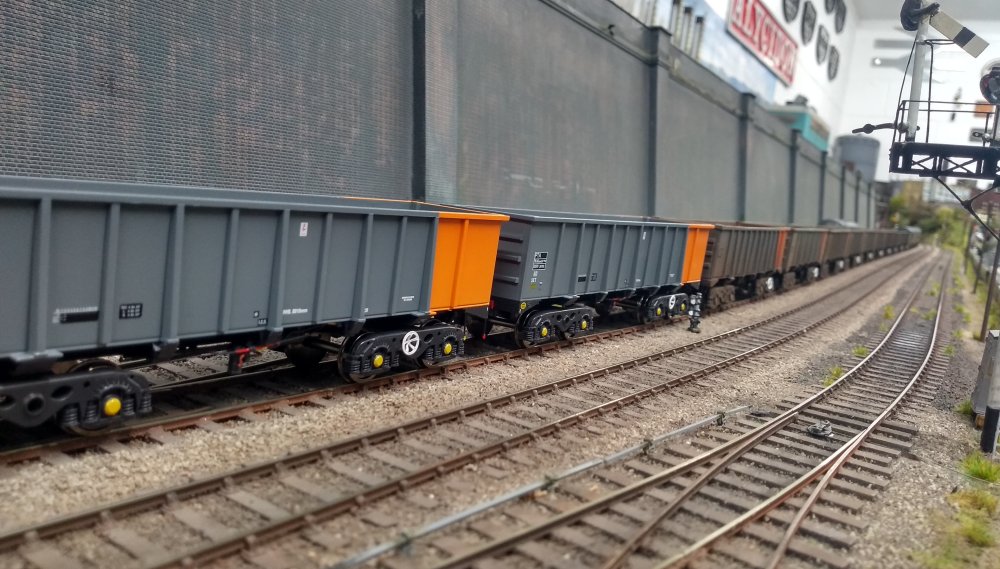
....soon to be weathered.
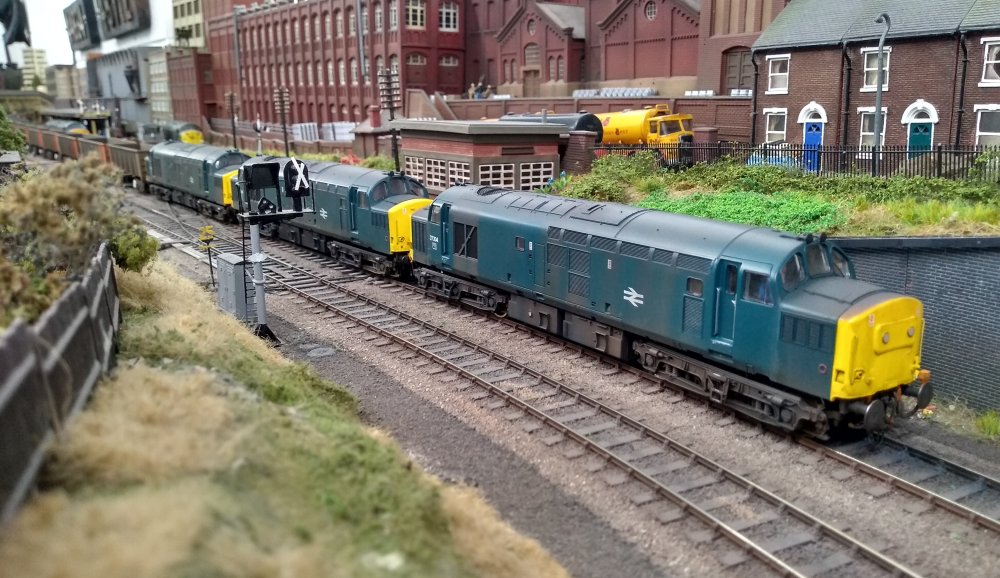
37304, 37141 & 37158 are all Vitrains Class 37s.
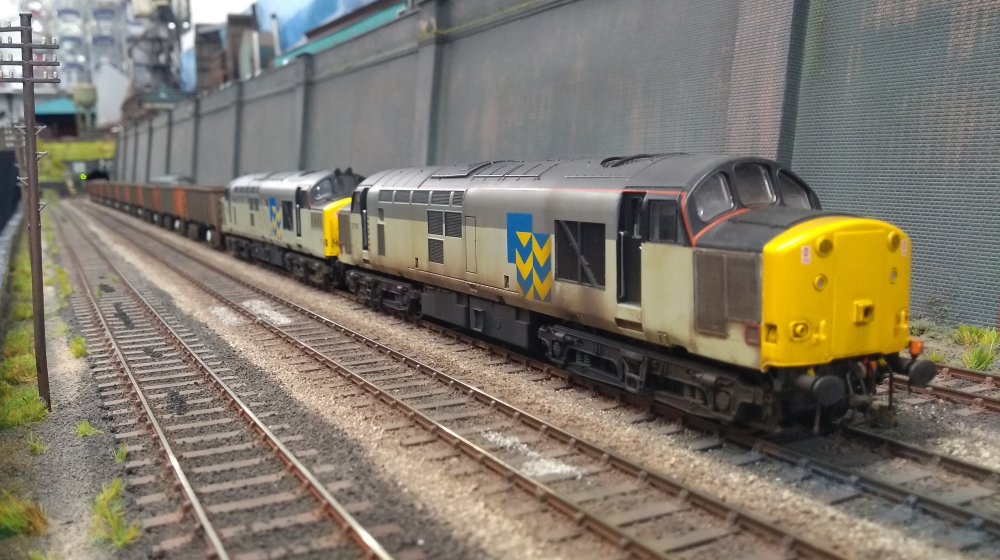
37711 & 37137
*****************************************************************************************************************************************************************

IAN MANDERSON
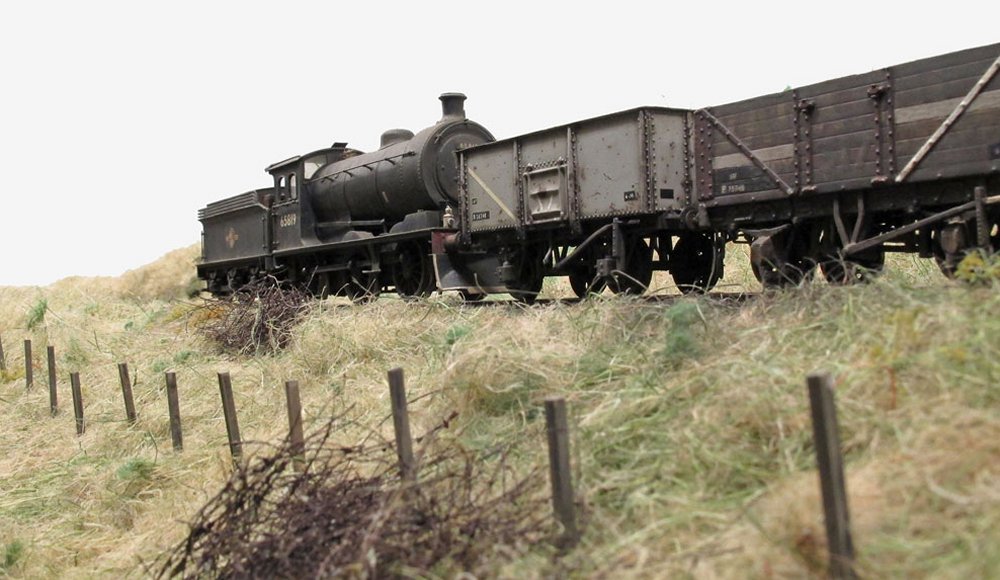
Before I get to my update, having heard recently of the sad passing of Dave Alexander, I want
to start with an image of one of his kits that is integral to Hartburn, built by Pete Johnson.
I met Dave a few times over the years, a lovely man, always happy to talk, and full of a good
story. As Pete will concur, the quality of casting in his kits we always found to be top notch
and they went together a dream. He will be greatly missed.
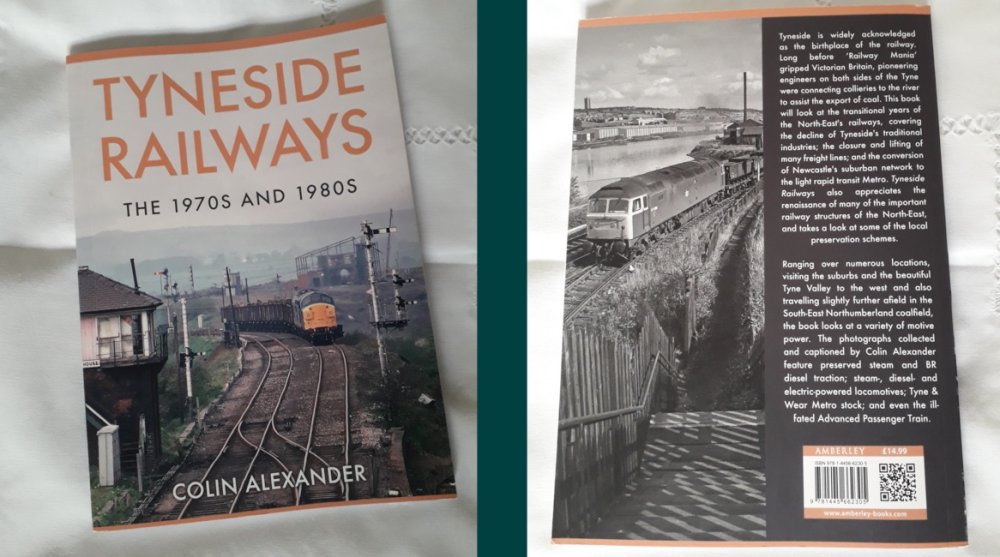
Following on from the previous update, I bought the Tyneside Railways 70s and 80s book by
Colin Alexander, with plenty of inspiration within the pages. I've found information on various
websites including disused stations/elswick, and google/chroniclelive but photographs are few
and far between. A more detailed look at the maps showed Elswick having an island platform,
hemmed in by the riverbank and the road so a compact site, with a couple of sidings.
So, the planning continues, evolving into a station / scrapyard scene with a stretch of water,
DMUs to Carlisle, and freight in the form of bitumen tanks. In terms of the buildings around the
station, I came across a book of photographs taken by Jimmy Forsyth of the Scotswood Road which
are wonderfully atmospheric – more to follow.
*****************************************************************************************************************************************************************

KIER HARDY

The north end of the layout features the station buildings on Bridge Street, which also forms the
scenic break with the off-scene curves situated beyond. Recent developments have resulted in
additional space having been acquired (smaller workshop area and the partition wall moved)
giving the opportunity to model the station platforms. The red arrow indicates where the partition
wall was originally located, its new position now allowing an additional 4'6" to be incorporated
into the scenic section.

A new baseboard has been partially built (half width for the moment for easy access), with Bridge
Street and its environs moved further north so as to retain their function as a scenic break. The
easier option of constructing the platforms beyond the station buildings would have resulted in
them being partially hidden from the operating position / control panel area. This view shows the
various scenic modules having been removed and posed in their new approximate locations.
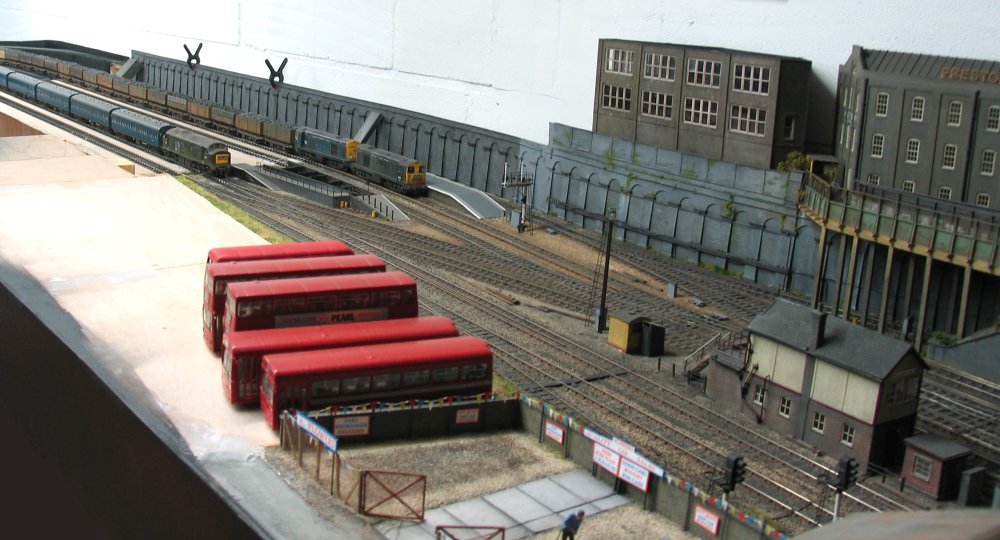
With the track laid, wired and tested in the station area, running has now resumed. The area in
the foreground (where the underground was located) has been built up in preparation for scenic
development, with the construction of the new platforms and retaining walls well underway.

The resin cast retaining walls have received their first weathering treatment, and the platform
construction continues, using 2mm thick plastic card walls with 1.5mm scribed tops.

As with a lot of the Great Northern stations in the early 1970s, the platform surfaces appeared
to have a tarmac finish with reinforced concrete edging stones. The base colour has been applied
here, leaving a large white edge ready to receive its concrete colour with a thin white edge. The
platform tops are just blu-tacked in place for the moment, and will be detailed in due course.
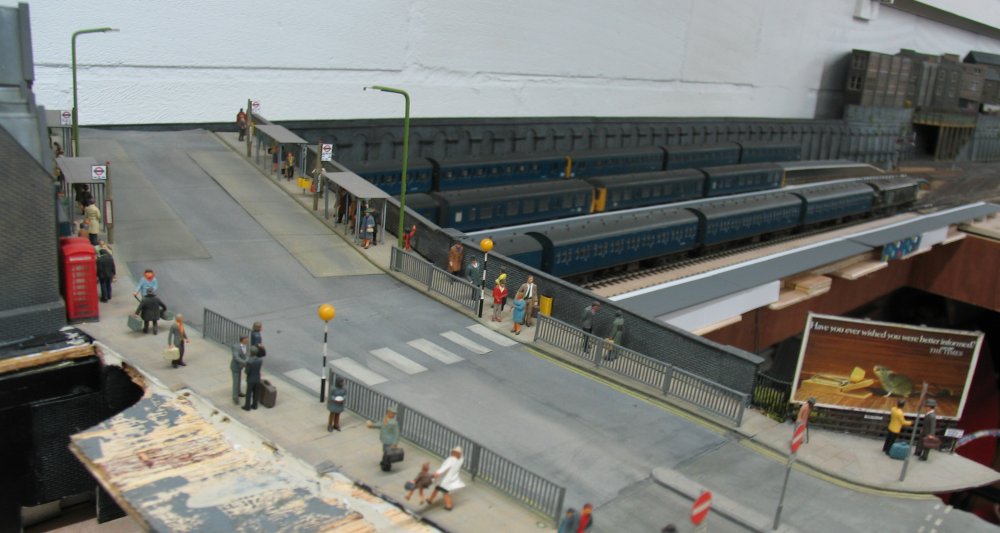
A snapshot from the other direction.
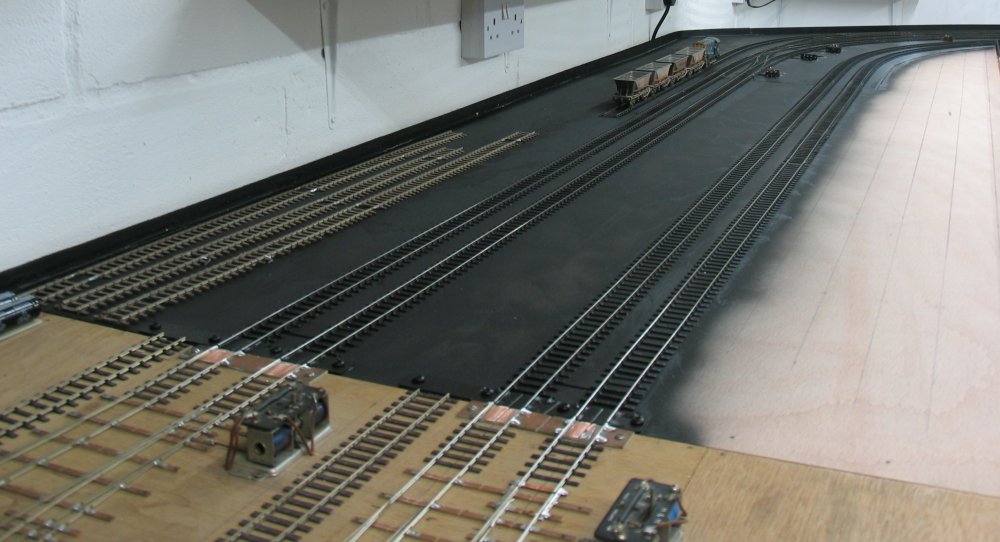
Another new baseboard is shown here on the other side of the room bridging the gap between the
storage yard and the end curves, providing space for an additional 10 storage sidings to stable
shorter train formations and multiple units.
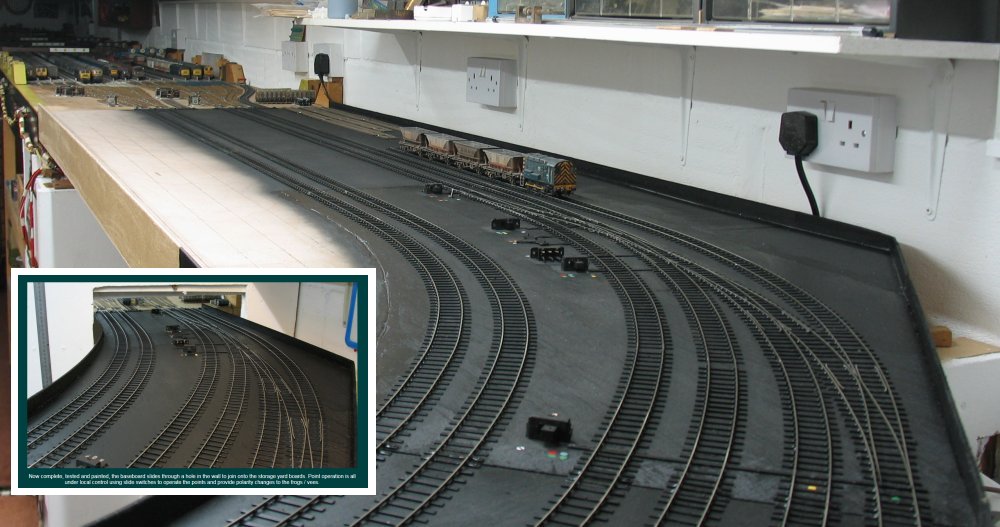
The inset shows the curved board as featured on the September 2019 update, joined to the end of
the storage yard through the hole in the wall. This curved board has now been spliced into the
larger baseboard, providing siding space at both sides of the main lines.

Prior to lockdown #2, here are some snaps taken from the lineside, where a few visiting loco's
were spotted. Here's Greg's D165 from the Shenston Road fleet.
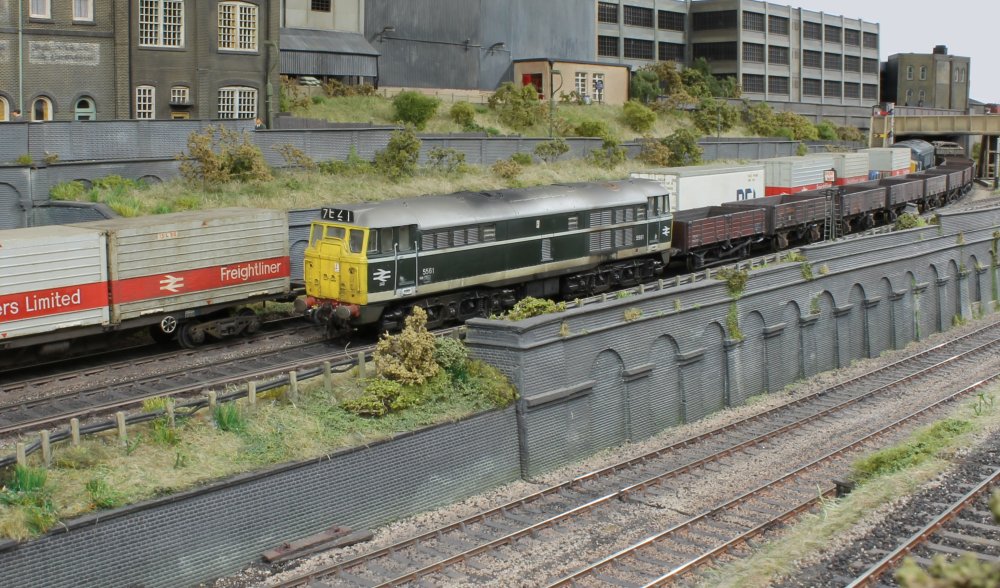
Watching the trains go by.... here's Immingham based Brush 2 - 5561 heading north with a
mixed freight, passing a freightliner service which has been held at the signals. A
double motored Lima Class 31 from Paul's Eastwell fleet.
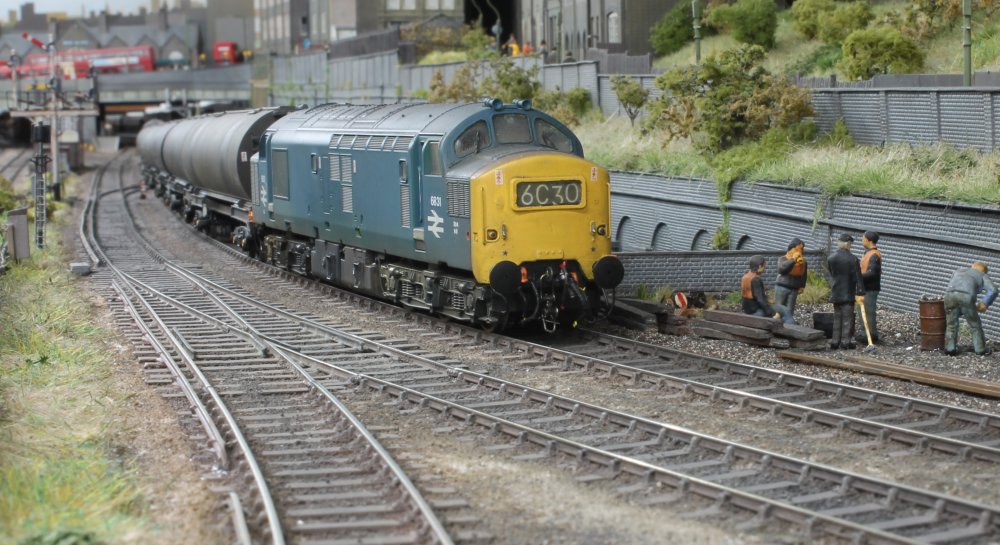
Also from the Eastwell fleet is 6831, a Stratford allocated EE type 3 with a tank train
bound for Ripple Lane. Another Lima double motored model.
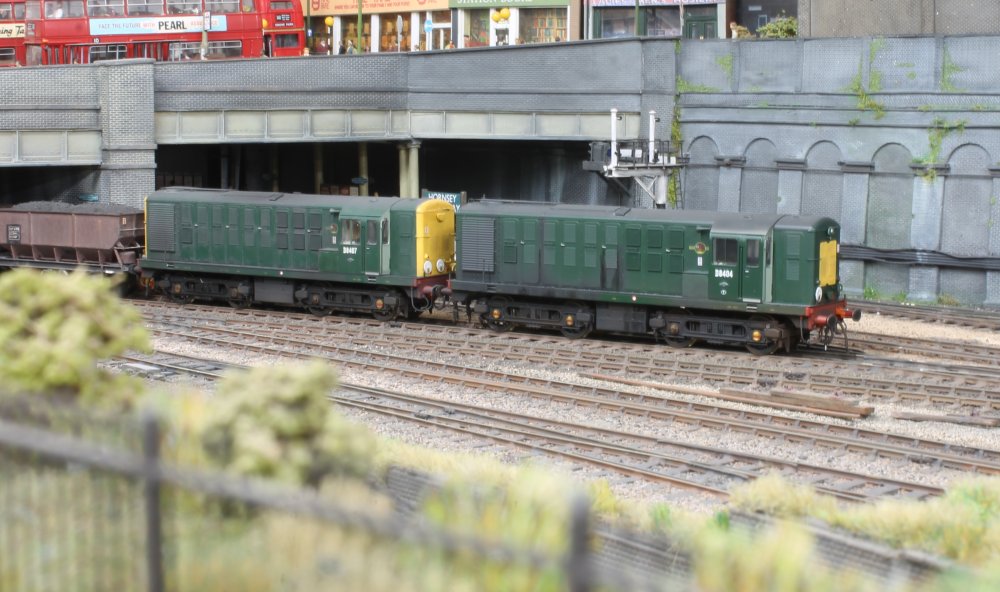
A pair of Heljan North British Class 16 locomotives.

Another Stratford loco D6963 paired with Landore's 6607. Both Lima double
motored models by Paul, seen here being exercised.
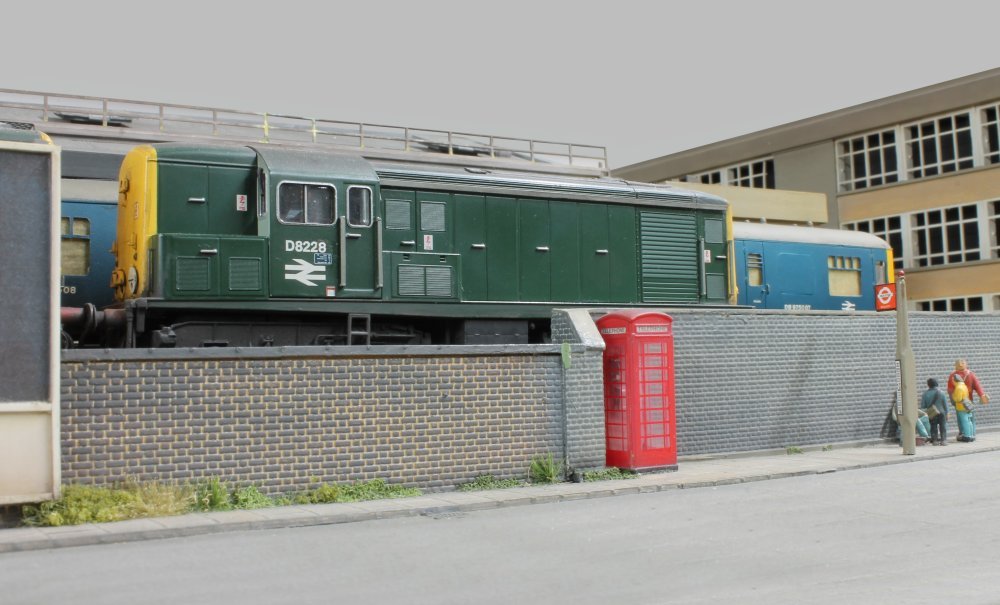
Captured from the roadway is BTH Class 15 D8228 awaiting its next turn of duty. By the late 1960s, the
work for which they'd been built had almost disappeared, with many meeting the cutter's
torch in good working order.
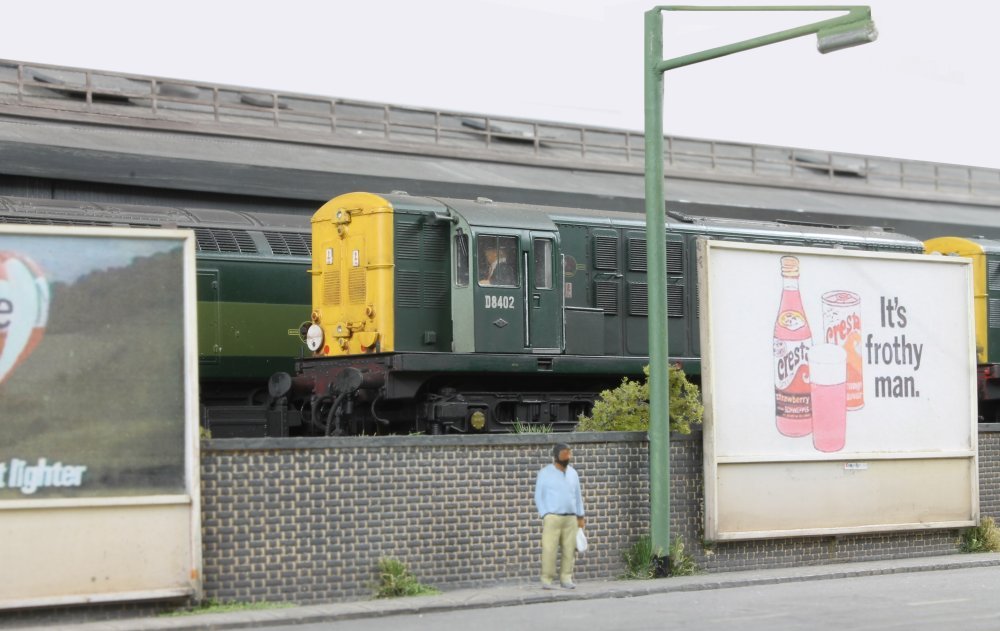
A glimpse of D8402 and a sister loco in the holding sidings at Hornsey depot.
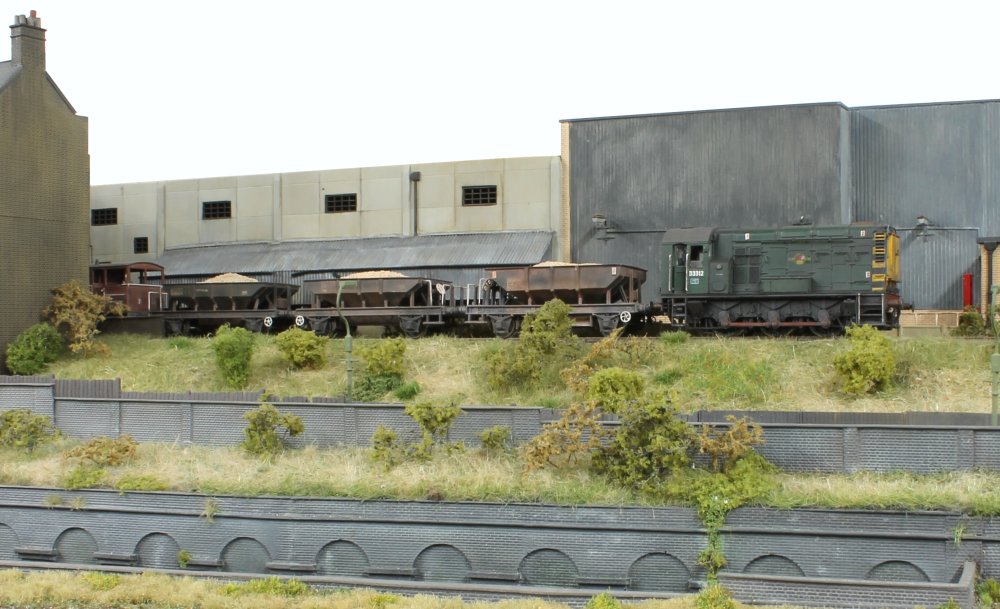
Meanwhile D3312 is in charge of a short ballast train on the branch line.
*****************************************************************************************************************************************************************

PETE JOHNSON
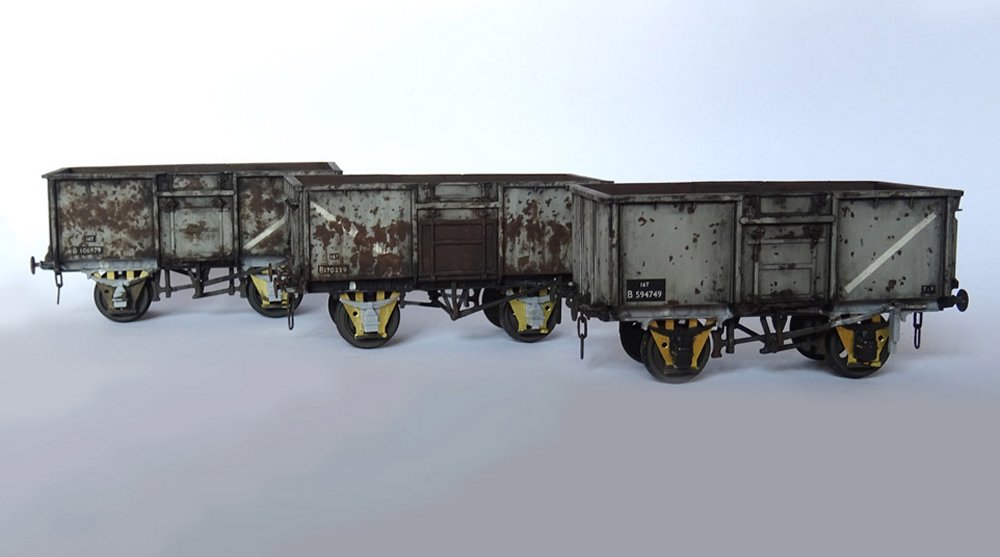
The 16 ton mineral wagons pictured last month have now had the second weathering stage applied.
For this I use a black stained matt varnish for the coal dust grime, worked into all the corners
of the framing and door latch mechanisms. It is then cut back with a clean brush and white spirit
to leave traces which blend out gradually onto the flat panels.
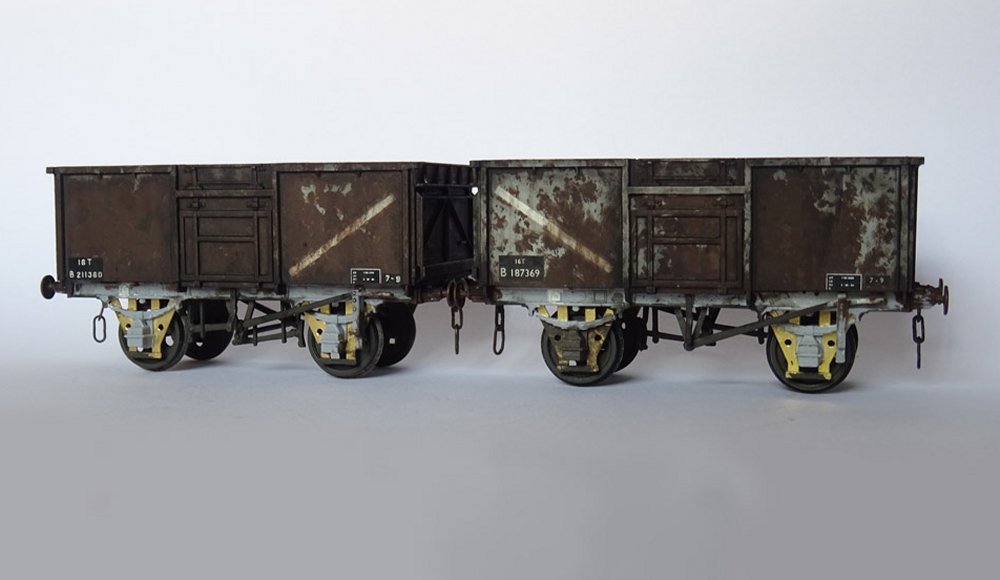
The result is shown with the same wagon groupings as previously. Well rusted B211360 has now had
markings applied using block stencil font adapted from a Fox transfer sheet.
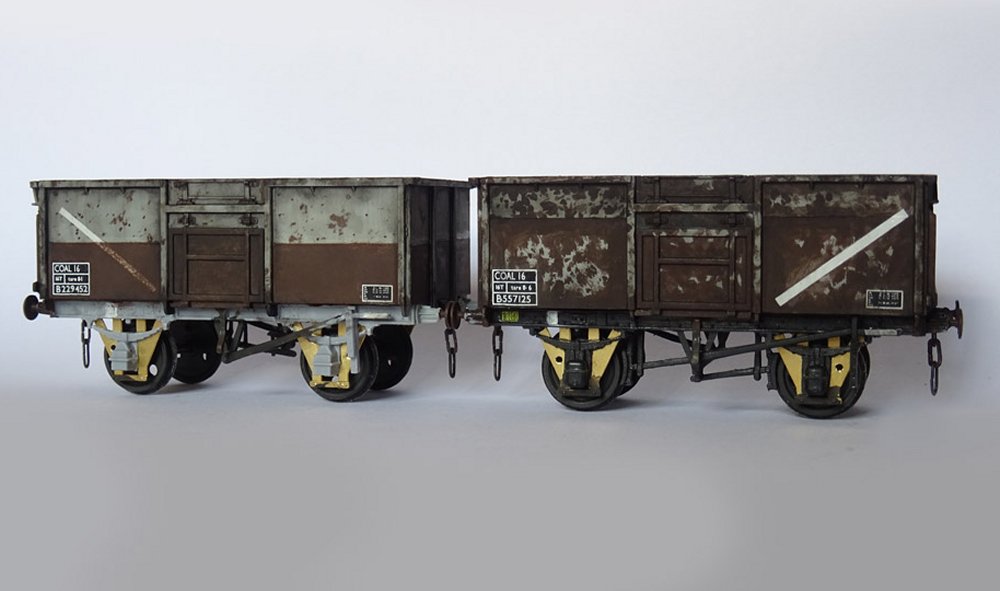
The last pair use Fox again for the datapanel markings. This paint stage softens the appearance
of the rust patches and begins to get close to the finished look.
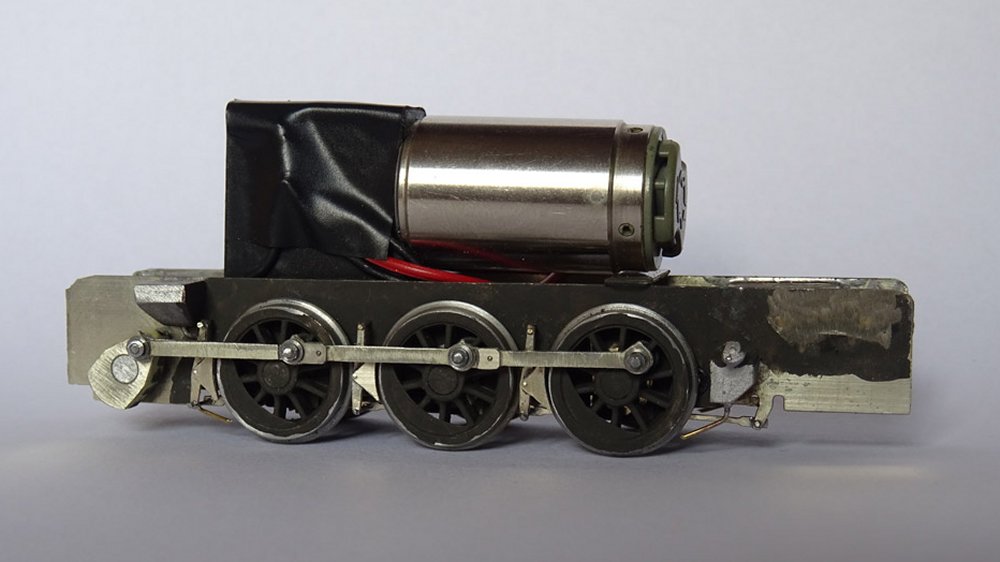
The completed mechanism for the Hudswell-Clarke is shown after assembly. My thanks must go again
to Robert Rogers for his visit to the 2019 Hazel Grove show and supplying the drive unit to power this model.
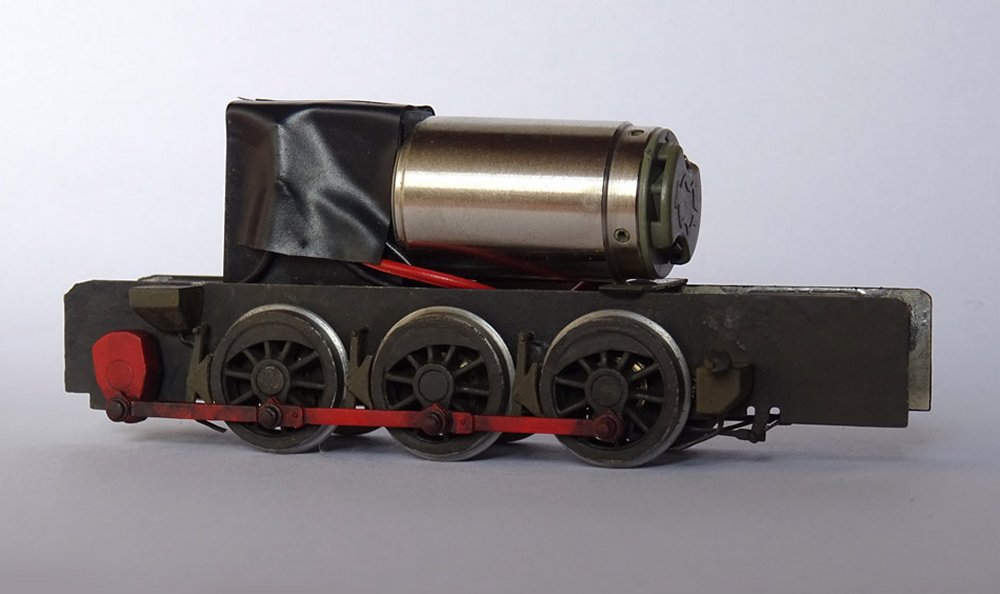
The chassis is shown again after painting, and is now ready to install.
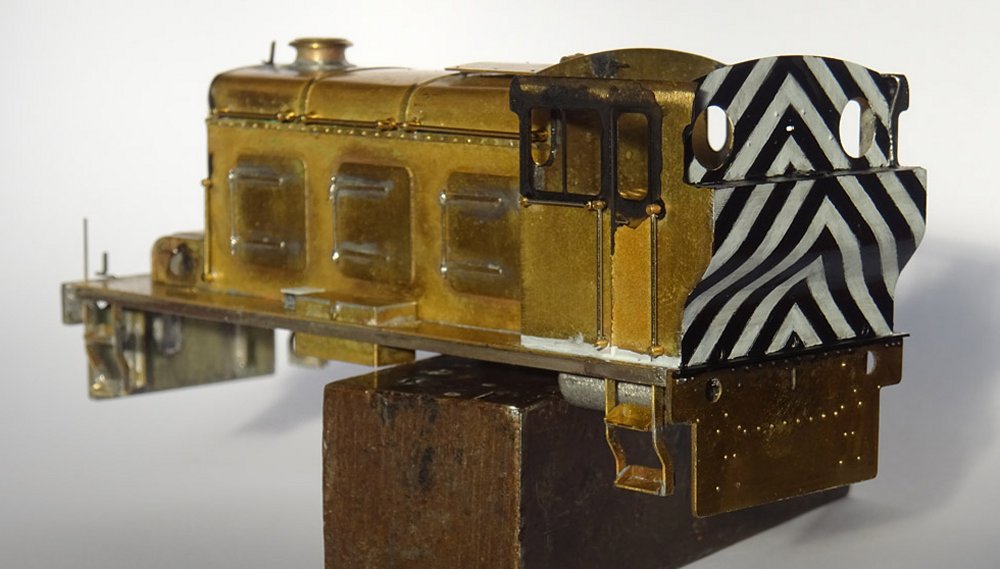
The wasp stripe pattern has been applied by my normal method, on a thin matt white undercoat.
To assist marking out on the curved bunker a 0.25mm styrene template bent to a matching reverse
curve was used.

The nose end stripes are a more muted affair and are shown after addition of the yellow.
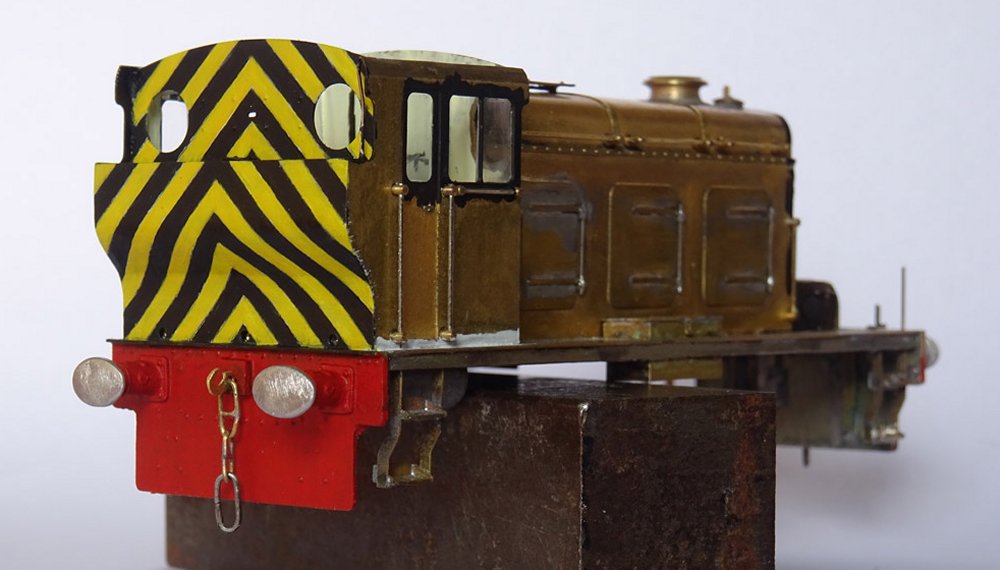
The cab back is shown at the same stage. Glazing at the front and side windows has been fitted,
but the external overlays of the rear portholes remain to be done.

The Hudswell mechanism ran so well at the first try that I got inspired to take on a project
that has been waiting 30 years or more. This was a replacement mechanism for a scratchbuilt
Barclay 0-4-0DM that was my first EM gauge model. Making the new chassis for the ‘01’ got
memories stirred of my two visits to the Holyhead breakwater railway during the late 70s.
Both were of limited success as the shed was firmly locked, but a search eventually found a
slit in the shuttering from where the two locos could be glimpsed in the gloom. The unique
nature of the operation grabbed my imagination and plans grew to model the location and rolling
stock. A further visit to collect location photographs in November 1981 was rewarded by access
to the loco shed, thanks to a fortunately timed errand by a railwayman from the main depot.

Sadly, the axe was already falling on the rail operation, and a return with a surveyor’s tape
for a more detailed survey in April 1982 was to find the tracks largely buried by mud, and
large rocks blocking off rail access to the shed. Another BR man on an errand described how the
locos had been driven out of the shed and cut-up just a few weeks earlier – and kindly gave me
a polaroid he had taken showing the scene.
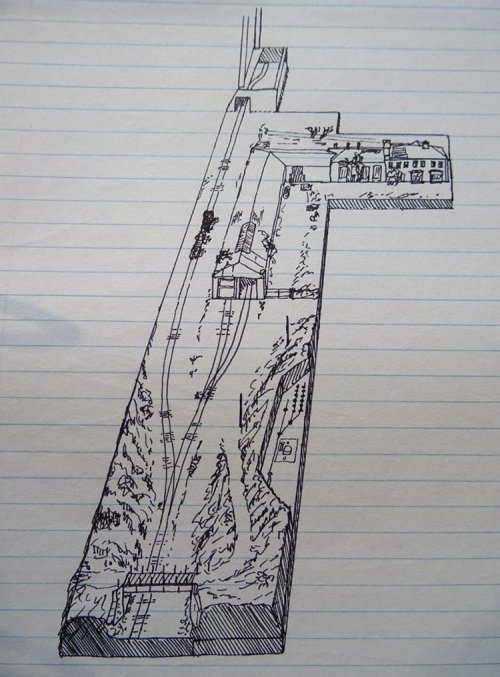
Sketches from the time (and never thrown away!) show what was planned, with an accurate scale
model of the large shed/workshop, and the running line between the quarry and breakwater. The
two class 01s became my first attempts at scratchbuilding small shunters. 01 002 was completed,
the baseboards were built and track laid. A start had also been made on the shed building when
it began to dawn that although I was fascinated by the location there might be very few others
who were – or were even aware of it.
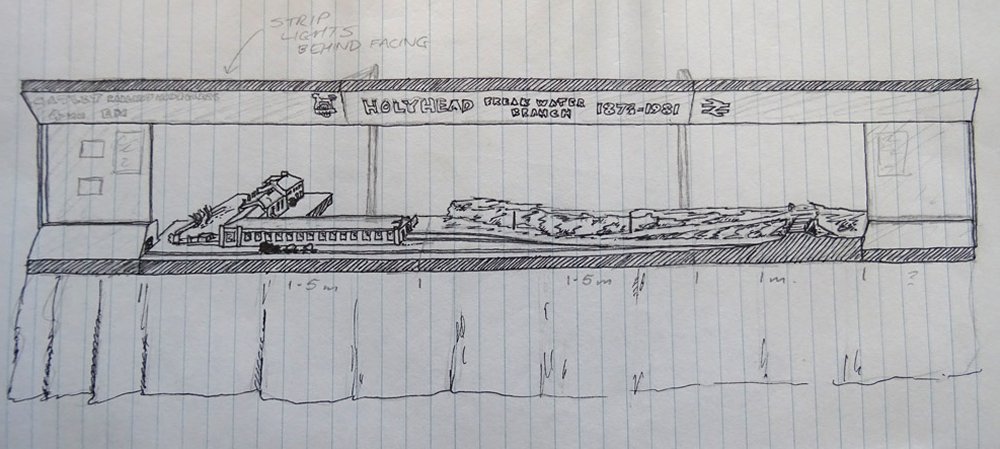
Long days stood behind the ‘Holyhead Breakwater Branch’ layout at exhibitions as a constant
stream of people glanced at the mostly empty track and walked on began to be imagined, and so
the project was abandoned. The outcome was ‘Canada Road’, several more scratchbuilt small
shunter types, and an ever growing fleet of wagons. 01 002 was carefully boxed with a thought
to improve the chassis one day, just for the memories.

The incomplete Soldier’s Point shed building was offered to Kier, who skilfully incorporated
it into the stabling point on Wibdenshaw. The baseboards and track were stored…..and still are.
The loco that was to be 01 001 was finished instead as ‘D2954’ in an early ‘60s livery, and
sees use on Canada Street.




